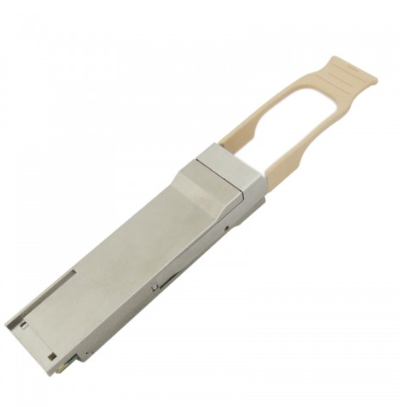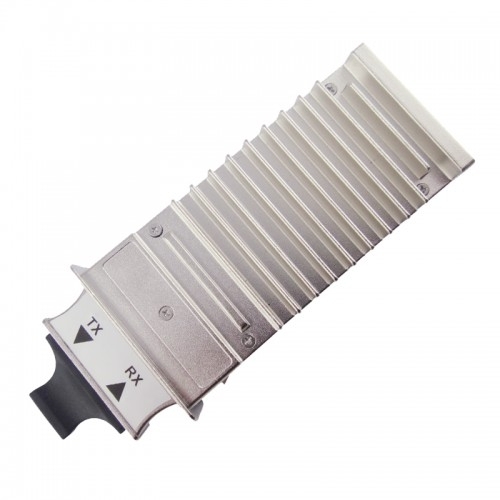- Related articles
- What Is GYDTA Fiber Optic Cable?
- Difference between XENPAK and QSFP+
- The Difference between CWDM and DWDM
- What is media converter in network?
- The Difference between PCI Express SSD and SATA SSD
- The Difference between GBIC and X2
- Applicable to 100BASE-LX10 Standard Optical Transceiver Models
- All Cisco ONS-SI-2G-I1's information (List price, Specs, Datasheet PDF, Compatibility matr
- All Cisco CWDM-GBIC-1590's information (List price, Specs, Datasheet PDF, Compatibility ma
- All Cisco X2-10GB-ER's information (List price, Specs, Datasheet PDF, Compatibility matrix

Definition
The 40-Gigabit QSFP+ transceiver module is a hot-swappable, parallel fiber-optical module with four independent optical transmit and receive channels. These channels can terminate in another 40-Gigabit QSFP+ transceiver, or the channels can be broken out to four separate 10-Gigabit SFP+ transceivers. The QSFP+ transceiver module connects the electrical circuitry of the system with either a copper or an optical external network.
10GBASE X2 modules offer customers a wide variety of 10 Gigabit Ethernet connectivity options for data center, enterprise wiring closet, and service provider transport applications.
Difference between QSFP+ and X2
QSFP+
- QSFP+ MSA, SFF-8436 compatible
- Four independently addressable transmit and receive channels
- Highly compact: savings of 60% on edge and board usage compared to four comparable SFP+ modules
- Electrically hot-pluggable
- XFP-like latch mechanism for ease-of-insertion
- Digital Diagnostics Monitoring Interface. allows customer management and monitoring of key modules parameters, analogous to SFP+
- Optical connectivity via industry standard MPO/MTP terminated fiber ribbon
X2 10G
- Compatible with SENPAK MSA Rev 3.0
- Support of IEEE 802.3ae 10GBASE-L
- XENPAK MSA package with duplex LC connector
- With Digital Diagnostic Monitor Interface
- Operating temperature range 0 to 70 degrees Celsius
- Hot Pluggable 70-PIN Connector with XAUI Electrical Interface
Applications
The QSFP+ transceiver is used primarily in short reach applications in switches, routers, and data centre equipment where it provides higher density than QSFP+ modules. The X2 offer customers a wide variety of 10 Gigabit Ethernet connectivity options for data center, enterprise wiring closet, and service provider transport applications.
SFF-8436
The sff-8436 module and connector dimensions described in this clause are constant for all applications. The bezel, cage assembly, heat sink, and clip can be designed and/or adjusted for the individual application.
QSFP vs QSFP28
The 100G QSFP28 makes it as easy to deploy 100G networks as 10G networks. When compared to any of the other alternatives, 100G QSFP28 increases density and decreases power and price per bit. It is fast becoming the universal data center form factor. Here are some of the reasons. The QSFP28 increases front-panel density by 250% over QSFP+. The form factor is the same and the maximum number of ports is the same, but the lane speeds are increased from 10 Gbps to 25 Gbps. The increase in panel density is even more dramatic when compared to some of the other 100-Gbps form factors: 450% versus the CFP2 and 360% versus the CPAK.
Conclusion
Optical transceiver market is growing rapidly and expected to be worth billion dollars. Network designers confirm that big data technology in the data centre is a major contributor to this growth. A transceiver, as a necessary component in the data center, can help executives to get their data in real-time, thus people can make immediate decisions. This is why it’s so important to be aware of how transceivers help to support big data.























































